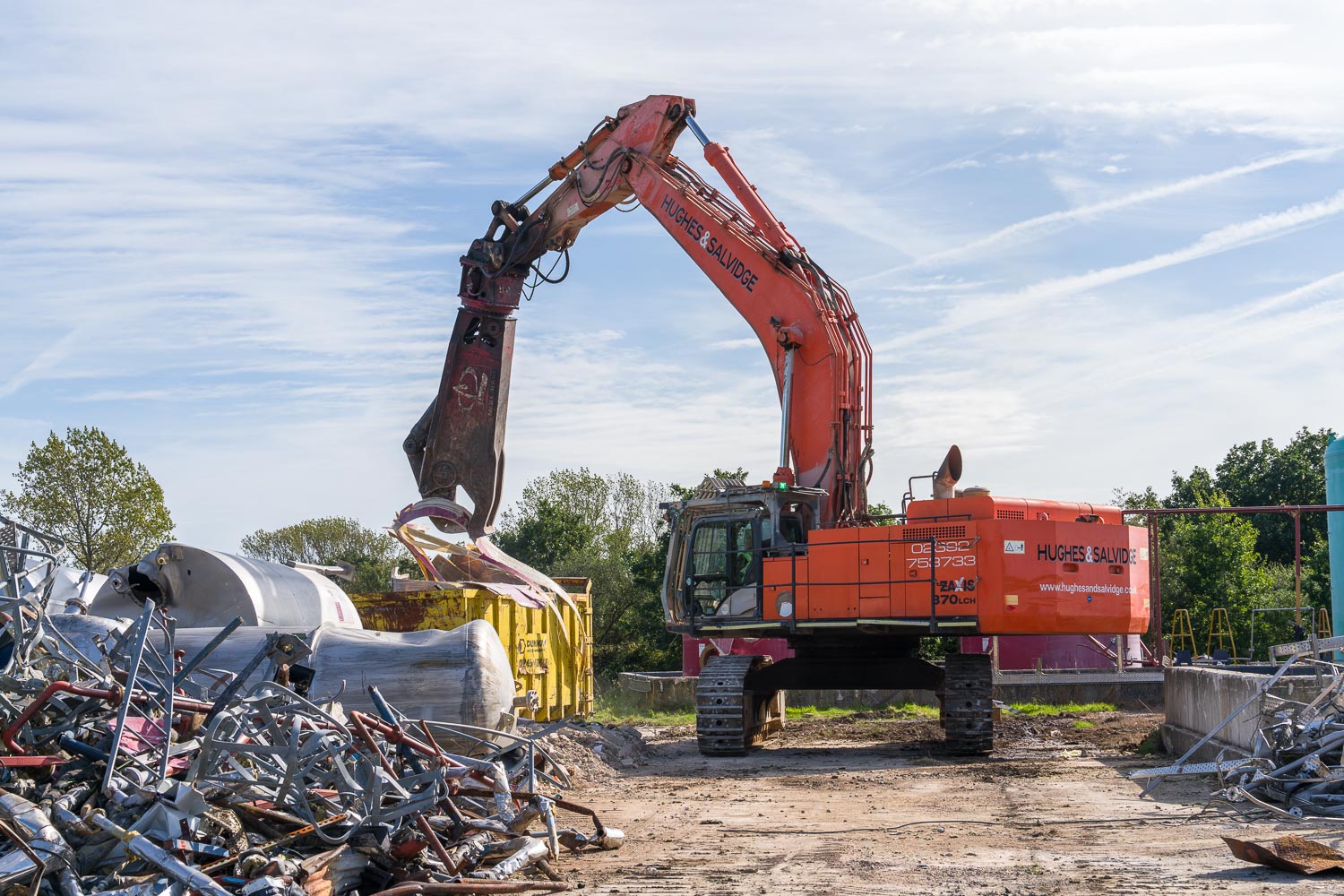EPC Groupe
Extensive control measures implemented to ensure safety
Complete solution delivered on-site
Project completed with zero accidents, zero environmental incidents and zero trip events
Hughes and Salvidge were appointed to the role of Principal Contractor for demolition works at EPC Groupe’s Bramble Island, Essex premises.
The Client
The client is EPC-UK, part of EPC Groupe, and the work we undertook was at their Bramble Island, Essex premises.
EPC-UK is a leading UK force in the field of commercial explosives and drilling & blasting services. Operating through four divisions; explosives, drilling & blating, energetics, and logistics, they provide unique services and operations using methods where safety is always considered the number one priority.
EPC-UK operates out of two sites in Derbyshire and Essex, ideally located for road and sea logistics channels. Backed by the manufacturing know-how, extensive R&D, product support and experience of the wider EPC Groupe, they deliver world class products and services.

The Requirement
The project requirement involved a combination of decontamination, demolition and removal works. The project commenced with site set up, followed by asbestos removal where required. Next, the Metals Recovery Plant (MRP) needed to be decontaminated, followed by a soft strip and then demolition of the MRP, as well as the TCB and FA plants. Upon completion of the above, all materials and concrete plinths needed to be removed from site, with pipe runs being taken down and cleared also.
The site was still in operation whilst this work was being undertaken with services remaining live, so all contractors had to ensure that they remained within permitted areas and were mindful that work may have to cease at certain times while other activities are taking place.

Project Delivery
Control measures
Before commencing this project, we put a range of control measures in place to ensure safety and compliance on site. These included:
• Danger areas were fenced off to stop unauthorised access.
• Adequate spill response equipment put in place before work began.
• Site boundary fencing and appropriate warning signage installed.
• Brief daily morning meetings were held to discuss the day’s proposed activities and ensure good communication is maintained.
• Two-way radios were utilised for communication and emergencies.
• Service drawings and historical data was checked for underground voids within the vicinity of the demolition area.
• All teams completed a Take Five card before commencement of works to ensure any changes were identified.
Soft strip
Asbestos removal was undertaken by a licensed asbestos removal contractor on our instruction. We then commenced the soft strip, which encompassed the removal of all fixtures & fittings, furniture, carpet tiles, false ceilings, timber, services, cables, light fittings, insulation / lining boards within the structures to allow for the demolition.
To minimise manual handling, drop zones were formed with the arisings being dropped down to ground floor level, where a 360° excavator segregated the different waste types into various skips. All debris was removed on a regular basis and transported to the appropriate collection points for disposal, ensuring a clean, safe working area.
Superstructure demolition
Each area was made secure using Heras fencing with warning signage fixed to it, with access points for vehicles, managed by the site team.
We utilised our Hitachi 490 excavators on site. These are fitted with various demolition attachments which were used to demolish all the structures to slab level. A smaller excavator followed the larger one, clearing any left-over waste or scrap, before moving onto the bund walls and plinths. All upstands were demolished using a hydraulic breaker to reduce them down as much as possible.
During the demolition of the FA plant, some of the current plant had to be separated from the historic plant, at which point no site operatives were permitted into the area, with fencing and warning signage installed to ensure safety. Upon completion of each area, it was handed back to the client with an official sign off and removal of fencing so there was no confusion as to which areas were off limits and which were clear.
Prior to commencing these works we completed an inspection of the services drawings, a CAT scan of the area, marked up any identified services with spray paint and issued a Permit to Dig.
Once we’d exposed a significant amount of ground bearing slab we utilised machines fitted with impact hammers and buckets to puncture the slab and foundations to break them up to moveable sections. Next, we used machines fitted with a bucket to lift and stockpile sections ready for further processing. All excavations were backfilled progressively after foundation removal, leaving a flat site. All concrete/hardcore generated during the works was crushed by us on-site, with a dust suppression system in place.

The Outcome
The project, which was a 10-week programme, was completed on time and on budget.
Explore some of the other projects we’ve undertaken as well as the services we provide…






